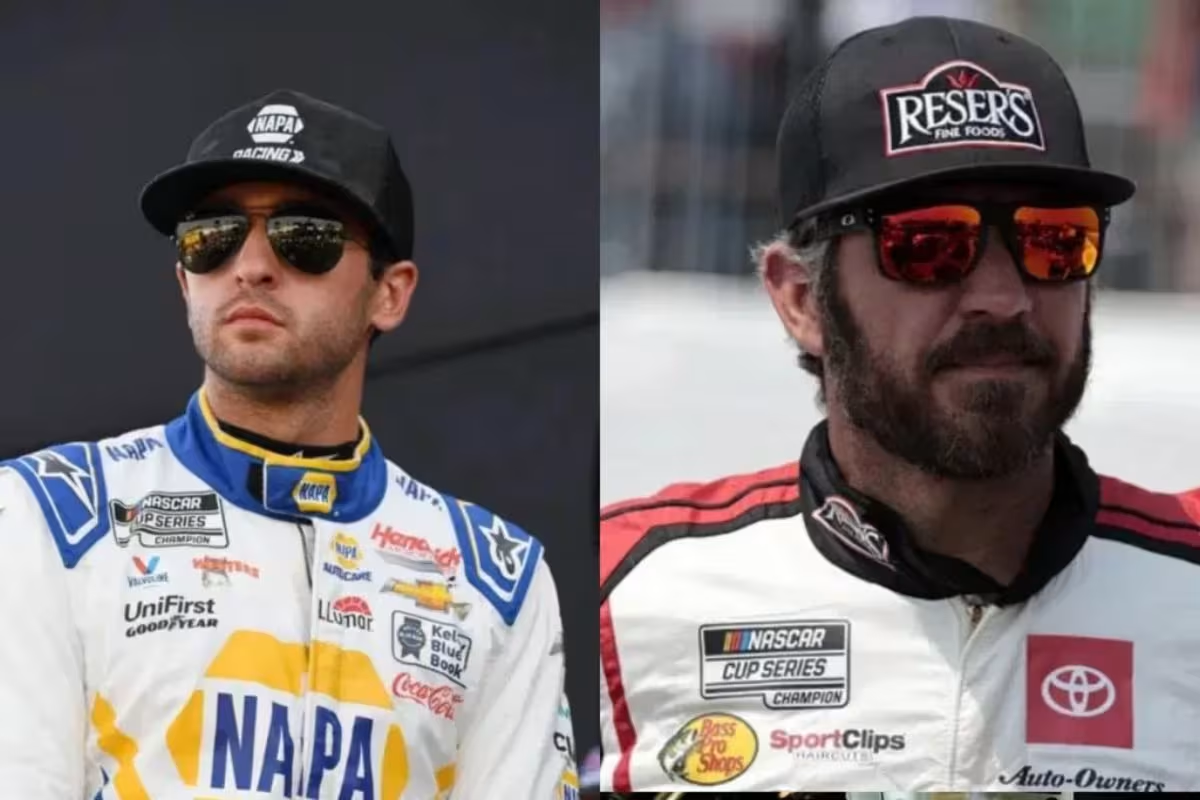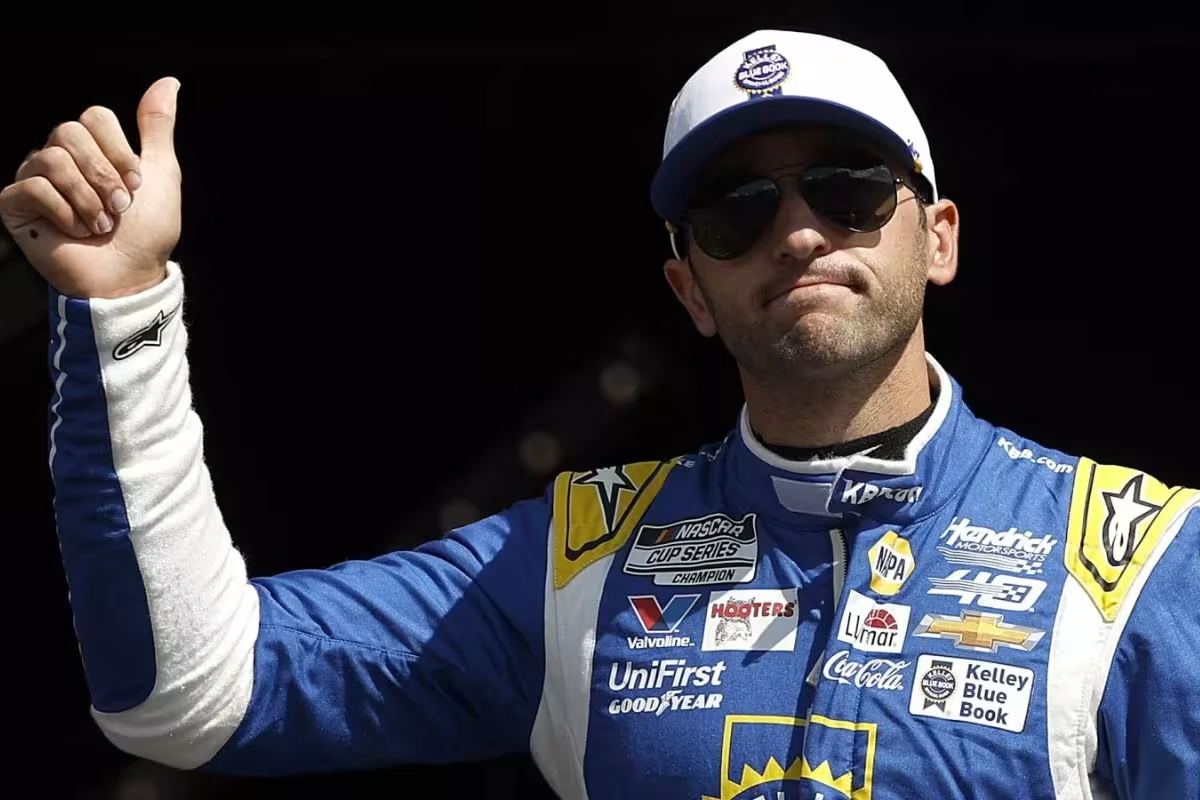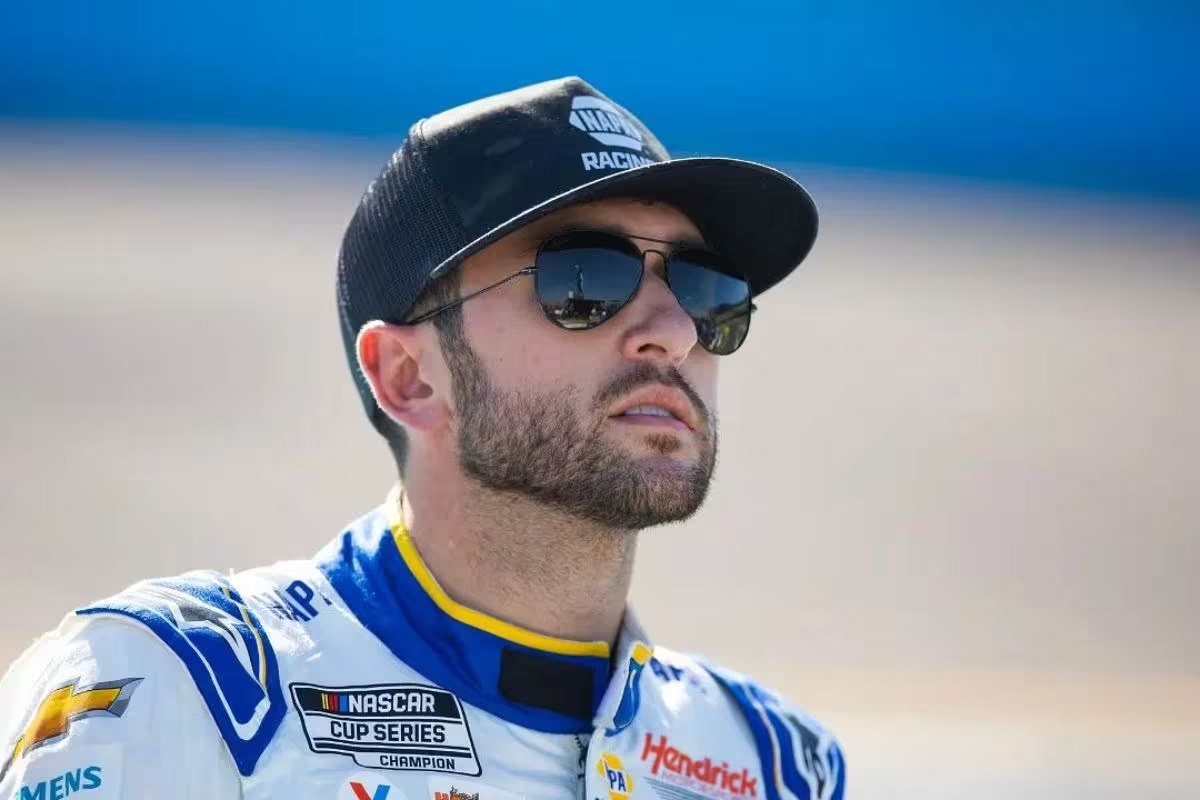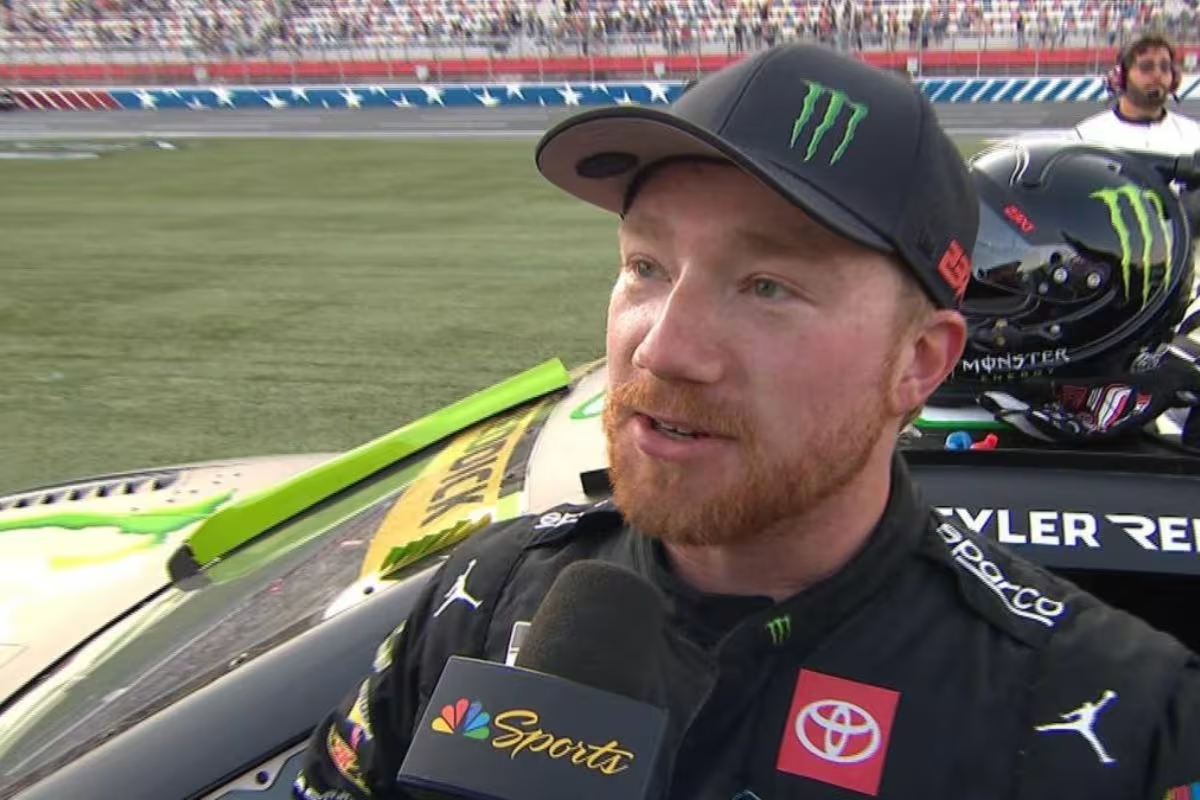Chase Elliott‘s Las Vegas exit came in the South Point 400 at Las Vegas, where he experienced a shocking early exit that derailed his playoff hopes. As he battled to secure a spot in the Championship 4, a multi-car wreck abruptly ended his race. This incident raised questions about Martin Truex Jr.‘s role in the chaos. Did he play a part in Chase Elliott’s misfortune?
Key Highlights
- Chase Elliott attributed the multi-car wreck at Las Vegas to Martin Truex Jr.’s actions, expressing frustration over the incident’s impact on his race.
- The wreck occurred on Lap 89, leading to Elliott’s early exit and significantly damaging his playoff hopes.
- Elliott’s Chevrolet was performing well before the crash, indicating a lost opportunity for a strong finish.
- The incident sparked post-race criticism towards Truex Jr., as Elliott reevaluated his race strategies moving forward.
- Both Elliott and Ryan Blaney experienced mechanical issues and setbacks during the race, emphasizing the unpredictability in NASCAR.
Chase Elliott’s Early Exit at Las Vegas
In the South Point 400 at Las Vegas Motor Speedway, Chase Elliott‘s early exit marked a substantial turning point in the race and his playoff aspirations. Competing in the critical Round of 8, Elliott entered the event with high hopes, anticipating a tactical and clean race that would solidify his position for the Championship 4.
Unfortunately, his plans were disrupted when a multi-car wreck unfolded on Lap 89, leading to an abrupt end not only for his race but also jeopardizing his playoff path. The incident, which involved three drivers, served as a clear reminder of the unpredictable nature of motorsport, particularly in a high-pressure playoff scenario.
Elliott found himself ensnared in the chaos, and the ramifications were immediate and far-reaching. The crash not only eliminated him from competition but also necessitated a reevaluation of his approach to future races, as each decision becomes increasingly consequential when playoff spots are on the line.
In the aftermath, Elliott’s reflections included a pointed critique of Martin Truex Jr., whom he implicated in the crash dynamics. His post-race commentary suggested a mix of frustration and resolve, emphasizing the emotional toll such incidents take on drivers.
As Elliott contemplates the implications of this setback, the lessons learned from this race will certainly inform his strategies moving forward, shaping not only his competitive mindset but also his approach to maneuvering the complexities of the NASCAR playoffs.
Chase Elliott Reflects on Missed Opportunity
The early exit from the South Point 400 not only ended Chase Elliott’s race prematurely but also left him grappling with the weight of a considerable missed opportunity. The incident unfolded in an instant, capturing the chaos that characterizes NASCAR racing. Elliott’s performance, which had shown promise throughout the day, was abruptly cut short, denying him a chance to capitalize on what was undeniably one of his best setups in the new car model.
Elliott’s reflections on the wreck highlighted his frustration, as he acknowledged the unfortunate timing of the incident. The potential for a strong finish slipped away as he noted the effectiveness of his Chevrolet prior to the crash. The sequence of events that led to his spin not only impacted his race but also altered tactical plans, emphasizing the unpredictable nature of motorsport.
“Yeah, I mean, the 45 was coming up a big run up-top and I don’t think Martin knew that. He was kind of running as if we were two wide and once I recognized there won’t be enough room, I tried to bail. There was just nowhere to bail, it was too late. I don’t know, I need to sit down and take a look at it. I was personally trying to get out of the situation, a little too late at that point. Sucks but the Chevy was really really good. Best we’ve been out here probably in the new car. Bad day for that.” – Chase Elliott
Chase Elliott to FOX Sports on the wreck and challenges ahead. Elliott: “I certainly understand but there was not a lot of room … in the corner. At that point in the race, it was a big gamble for him to bank on me recognizing and Martin recognizing that he had a big run up top.” pic.twitter.com/L7CifqaAN7
— Bob Pockrass (@bobpockrass) October 20, 2024
Elliott’s comments serve as a reminder of how quickly fortunes can shift in racing. The South Point 400 was not just another race; it was a crucial moment that highlighted both the potential of his team and the harsh realities of competition. As he moves forward, the lessons learned from this missed opportunity will definitely inform his approach in upcoming races.
Chase Elliott and Ryan Blaney’s Tough Day at South Point 400
Frustration permeated the atmosphere for both Chase Elliott and Ryan Blaney during the South Point 400, as mechanical setbacks and on-track incidents derailed their aspirations for a strong finish.
The race unfolded with high stakes for Elliott, who entered the event keenly aware of his precarious position, trailing nine points behind the elimination cutline with only four races remaining. However, a collision set the tone for a day of misfortune.
Elliott’s Chevrolet Camaro sustained considerable damage, forcing him into the pits for extended repairs on Lap 107. Although he was ultimately cleared to continue racing after reaching minimum speed, the damage inflicted was irreparable regarding competitive standing.
Resuming the race on Lap 131 placed him 26 laps behind the leaders, relegating him to 33rd position, where he would ultimately finish, 37 laps off the pace. His aspirations for a championship were further dimmed as he retired for the second occasion this season.
Similarly, Ryan Blaney’s day was marked by adversity. Though he managed to cross the finish line, it was a hollow accomplishment, as he ended the race eight laps down in 32nd place.
Blaney’s performance mirrored that of his teammate, highlighting the challenges faced by both drivers. Their struggles at Las Vegas emphasize a broader narrative of unexpected setbacks in the pursuit of NASCAR’s ultimate prize, leaving both drivers to reassess their strategies as the season heads toward its finale.
Ryan Blaney Remains Optimistic Despite Setback
Despite the challenges faced at the South Point 400, Ryan Blaney maintains a resolute outlook as he assesses his position in the playoffs. Currently sitting 47 points below the cutline, Blaney remains undeterred by the setbacks that characterized his weekend. His frank reflections reveal a driver focused on resilience: “We’re still alive. It was just a rough weekend in general,” he stated, acknowledging the unpredictable nature of racing that often brings unforeseen obstacles.
Blaney’s race was blemished by a combination of misfortune, including running over debris in practice and a collision with Brad Keselowski during the race. These incidents have left his vehicle considerably damaged, yet his perspective highlights a commitment to the remaining opportunities in the playoffs. “We still have two more weeks, so we’re definitely not out of it,” he emphasized, pointing out the potential for redemption ahead.
“It’s definitely not the best of days. It was just a rough weekend overall. I don’t know what to do about it, to be honest with you, running over something and having a hole in it in practice. And then just getting clipped by the 6 (Keselowski) there. I thought I could get around him and didn’t know if he’d come up the race track and then by the time he was kind of on the track it was too late. I got clipped and bent everything all to hell, so it was just a rough weekend. We still have two more weeks, so we’re definitely not out of it.” – Ryan Blaney
Tyler Reddick’s Reflections on the Incident
Reflecting on the tumultuous events of the South Point 400, Tyler Reddick offered a straightforward assessment of the incident that dramatically altered his race. Initially poised to secure his initial playoff victory, Reddick’s promising start quickly unraveled at the onset of Stage 2, culminating in a disheartening 35th-place finish—his worst result of the season.
Tyler Reddick’s introspective analysis highlighted the fine line between aggression and caution in the high-octane environment of NASCAR. “Being myself on a mile and a half, being aggressive,” he recounted, “by the time I realized I was in trouble, the 19 (Martin Truex Jr.) started sliding and the 9 (Chase Elliott) was coming up.” This admission emphasizes the significant nature of split-second decision-making on the track, where the margin for error is razor-thin.
Tyler Reddick acknowledged that he needed to adopt a more conservative approach as the chaos unfolded.
“Being myself on a mile and a half, being aggressive — by the time I realized I was in trouble, the 19 (Martin Truex Jr) started sliding and the 9 (Chase Elliott) was coming up, and I was pretty much already on their outside at that point, with nowhere to really go. I needed to make the decision earlier when I saw them sliding to be more conservative to avoid an incident — just not who I am, but it is unfortunate. It took us out of the race.” – Tyler Reddick
The consequence of the incident extend beyond just this race; both Reddick and Elliott find themselves in a precarious position heading into the final two races before the playoffs, with championship aspirations hanging in the balance.
News in Brief: Chase Elliott’s Las Vegas Exit
The incident involving Chase Elliott and Martin Truex Jr. at Las Vegas symbolizes the nature of competitive racing, where individual actions can have far-reaching consequences. Elliott’s reflections reveal the frustration of a missed opportunity, while Blaney’s optimism highlights resilience in the face of adversity.
Tyler Reddick’s insights further emphasize the complexities of racing dynamics. Ultimately, such events serve as reminders of the unpredictable elements inherent in motorsports, impacting not only individual drivers but also the championship landscape.
ALSO READ: Chase Elliott Breaks Silence on Alex Bowman’s Penalty and Questions NASCAR’s Integrity




